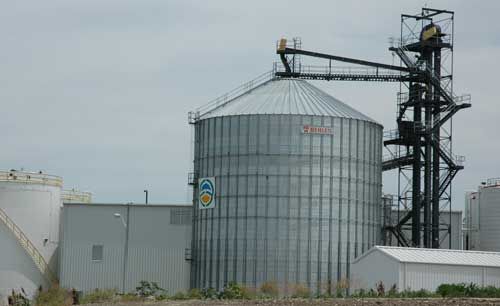Two bipartisan letters sent to the Environmental Protection Agency by 16 senators and 37 members of the House of Representatives called on the agency by June to increase volumes for advanced biofuels and biomass-based diesel as it finalizes its Renewable Fuel Standards for 2023, 2024, and 2025.
The letters outline several essential improvements to the rule that are needed to “give farmers and biofuel producers the confidence that the RFS is an EPA priority.”
“The final rule must increase the proposed volumes for advanced biofuels and biomass-based diesel fuels to accurately reflect market conditions,” the senators wrote. “The proposed volumes are inaccurate, would shrink the market, put nearly $5 billion near-term investments to increase crush capacity at risk, and destabilize the development of sustainable aviation fuel. EPA’s proposal sets volumes lower than current blending levels—lower than the added capacity that is coming online in 2023 alone—and is inconsistent with estimates of production.”
The senators’ concern about whether or not EPA will increase renewable fuel volumes came shortly after EPA proposed the strictest tailpipe emissions restrictions in U.S. history—restrictions that are designed to push the U.S. auto industry into being 67% electric by the year 2032.
In response to the proposed tailpipe emissions standards, the American Petroleum Institute wrote, “This deeply flawed proposal is a major step toward a ban on the vehicles Americans rely on. As proposed, this rule will hurt consumers with higher costs and greater reliance on unstable foreign supply chains.”
Among their objections, critics say the U.S. energy grid is not ready for the increased demands that will be placed on it. The International Council on Clean Transportation, which promotes decarbonizing and electrifying transportation, says “sales of passenger car EVs need to reach between 35% and 75% of the global market in 2030, and exceed 75% between 2040 and 2050.”
Biden’s Inflation Reduction Act dedicated billions to building out charging stations and U.S. manufacturers have sold 2.5 million EV’s in the past 12 years, according to an 8billiontrees.com article that is available at bit.ly/41V5Q98.
EV advocates tout a 60% rise in EV car sales this year over last year, probably thanks to a renewed $7,500 tax credit, but all EVs still only make up 6.1% of the total U.S. car market. A recent analysis by researchers at the University of Illinois and USDA’s Economic Research Service independently confirms a February projection from the Energy Information Administration that domestic renewable diesel capacity could more than double through 2025 to 5.9 billion gallons. EPA’s data show that U.S. biodiesel and renewable diesel production increased by more than 500 million gallons in 2022. The growth is supported by investments of nearly $5 billion by oilseed processors to increase availability of vegetable oils and meal for domestic use. However, EPA has proposed to keep RFS biomass-based diesel requirements below 3 billion gallons through 2025.
“The clean fuels industry thanks the bipartisan group of Senators for highlighting to EPA Administrator (Michael) Regan that biofuels lower fuel prices and strengthen economies across rural America,” said Kurt Kovarik, vice president of federal affairs with Clean Fuels. “The biodiesel and renewable diesel industry is providing a crucial supply of fuel that is needed to keep consumer prices in check right now. The growth of the biodiesel and renewable diesel industry is also bolstering confidence among farmers and rural communities for their economic future.”
“We especially thank Senators Amy Klobuchar and Chuck Grassley for leading this letter,” Kovarik added. In November 2022, Clean Fuels published a new study, “Economic Impact of Biodiesel on the U.S. Economy 2022,” conducted by LMC International. The study found that based on 2021 market data, the biodiesel and renewable diesel industry produced 3.1 billion gallons and generated $23.2 billion in economic activity, while supporting 75,200 jobs paying $3.6 billion in annual wages in the United States.
The study further calculates that producing 6 billion gallons of clean fuels in the United States would increase overall economic activity from the current $23.2 billion to $61.6 billion and support 187,003 jobs earning $8.8 billion in wages. The construction of additional capacity would increase economic activity by an added $4.3 billion and support an additional 144,500 related temporary jobs earning $5.8 billion in wages.
David Murray can be reached at [email protected].




